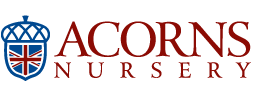It is true that more and more educators and parents are aware of the need to develop skills in children that are very important later on, in their adult life, such as: critical thinking, problem solving, creativity and emotional intelligence.
A quality early education, in line with children’s needs and day-to-day reality, respects principles applied by Acorns Nursery teachers, which can also be successfully pursued at home.
Here are six of the most important lessons recommended by early education specialists.
Learning through cooperation
A good teacher will know to encourage students to collaborate with each other. Cooperative learning increases the level of engagement and interaction in class, while socializing favors a stat of well-being in children and adults alike.
Team games and group tasks are tools that educators can use to encourage collaboration, negotiation and communication skills amongst children.
A study published in 2015 in the British Journal of Educational Technology compared several types of group dynamics in the classroom. It showed that students had been more open to the ideas coming from colleagues than to those coming from teachers, and that notions that had been learned through collaboration had been assimilated better.
Differentiated learning
Differentiated learning implies a lasting and genuine relationship between children and teacher enabling the latter to offer personalized study experiences. Ideally, each child should be trained according to their personal needs and interests, considering their stage of development.
For example, by offering children the opportunity to choose their activities according to their interests or the way they would like to participate in those activities, we increase their self-confidence and help them feel good about learning. In addition, keeping teaching materials within the child’s reach enables them to choose the activities that they are interested in.
Evaluation without labels
In the learning process, evaluation is done by collecting data that helps educators adapt their teaching to the needs of the children. This way, the children will be aware of what they need to learn and at what level. Simply put, where they are, where they need to go and how to get there.
It is important for the teacher to understand how children in his class assimilate the information. This can be done through direct observations, classroom discussions, peer-reviewed assessments, self-assessments, or learning journals.
Thus, teachers can adjust the learning process and can support or challenge students according to their needs and the level at which they are. This article contains more information about evaluation through observation.
Cross-curricular learning
Learning multiple subjects at the same time helps children to better understand the world around them. Themes such as seasons or the human body can be explored through several disciplines: natural sciences, geometry, arts. In the book “Cross-Curricular Learning 3-14”, Jonathan Barnes explains the importance of this teaching method: it improves connections between the two brain hemispheres and develops problem-solving skills.
Main approaches to simultaneous learning:
❖ Learning based on a project means that it will end with a concrete result.
❖ Problem-based learning requires the teacher to guide children into finding solutions to real issues in society.
❖ Investigation-based learning encourages children to ask questions, depending on what stimulates their curiosity.
These methods work because educators do not just tell kids what they need to know. Instead they encourage the children to wish to explore and find the information for themselves, in a way that all blends all subjects harmoniously.
Setting goals
In order to help children achieve their goals and allow time for self-reflection, they need constant and specific feedback from the adults surrounding them.
At first, setting goals takes a simple and very clear form. For example, through frequent discussions between child and educator or parent about his progress in a certain area. We can also apply the SMART (specific, measurable, achievable, relevant, time-based) objective model in the education process, as it can serve as a guide to children in acquiring new social and academic skills.
As each child is unique, so will be the learning strategy that is best for him: a synergy of elements best suited to his needs, interests and potential. The way to this individual “blend” begins by giving the child space, time and attention.
Integrating technology in learning
Today’s children were born in the Internet age and are preparing for an adult life which seemingly takes place more and more online. The right question about incorporating technology in education is not whether it is beneficial, but how this can be done in a healthy way. According to a study published in Teaching Children Mathematics in 2002, the use of modern devices in the classroom (such as tablets) facilitates the cognitive and social development of children.
Technology stimulates the curiosity of preschoolers and increases engagement in academic activities. Because of this, we already have a framework that favors the acquirement of technical skills.
